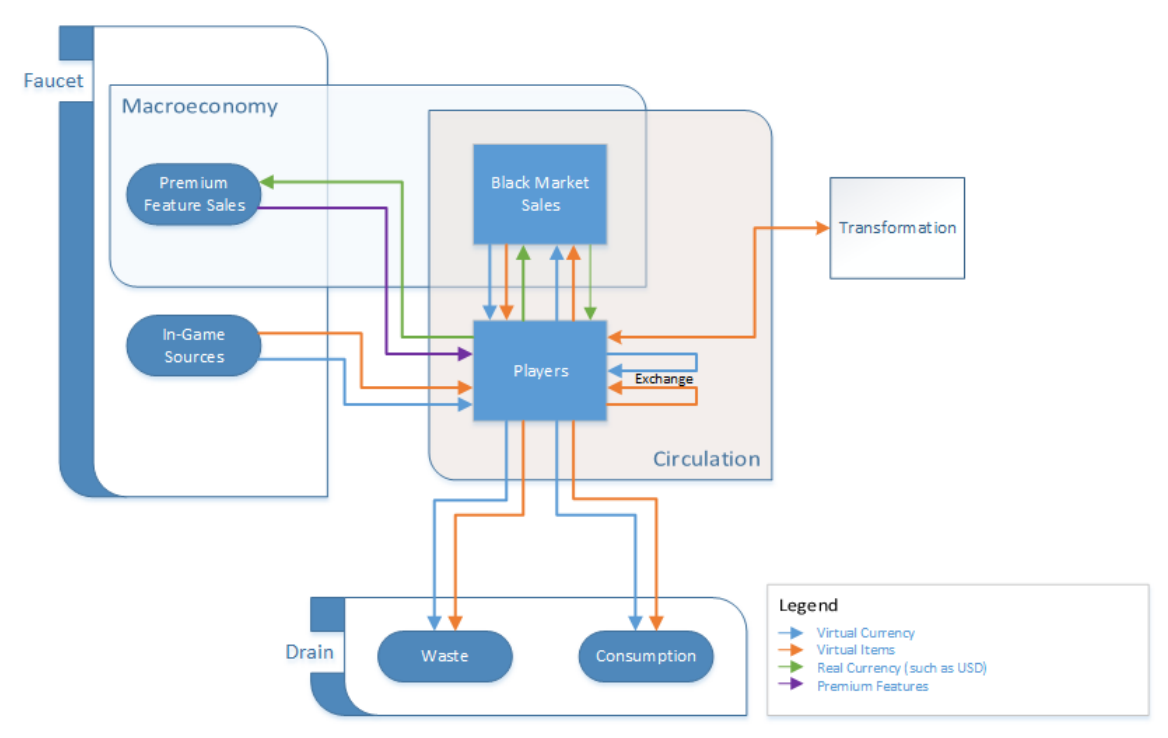
MMO economies are notoriously hard to balance, so most MMO players have seen the effects of stagnation and hyperinflation in an MMO economy for themselves. MMO developers must put in a significant amount of effort to prevent this, otherwise they run the risk of trivialising the economy, its virtual currency, and the items players buy, craft, or otherwise encounter. Virtual economy balancing is complicated by the fact that there really is an infinite amount of currency that can be created alongside an infinite amount of goods that can be bought or sold, necessitating the need for a controlled inflow of money and also a way to drain money from the economy regularly. For most MMOs, this balancing act is a full-time job for a whole team of people, and some of the most complex economic systems, such as in EVE Online, require an economist’s help to maintain.
In this edition of MMO Mechanics, I’m going to look at some of the ways MMO creators keep the circulating currency pool under control by exploring some taps that trickle currency into the pool and the common MMO money sinks that keep the money reservoir in check, and I’ll also discuss the mechanics that could be employed to help prevent economic stagnation.
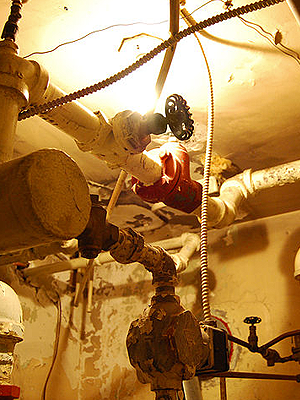 Sinks, taps, and a whole lot of plumbing!
Sinks, taps, and a whole lot of plumbing!
I wrote an article on Massively-of-old about maintaining balance in an MMO economy that makes a good starting point for this article. I’ll summarise here for those of you who aren’t very click-happy… yes, I see you lot hanging out in the back! Paying our way through our adventures — think repair costs, travelling fees, and gear upgrades or replacements — helps keep the economy churning, as does the purchasing of consumables and destruction of player property in open world PvP á la EVE. Currency and resource drains are automatically applied throughout the MMO experience to remove a significant amount of money and materials from the virtual economy, helping to keep the value of your coin and harvested goods high.
Economists have been studying virtual economies for a while now, and the Faucet-Drain Model has been put forward to depict how the currency flow in a virtual economy is kept under control. It also applies to crafting materials and other currency-like items that enter and leave the economy through various game mechanics. The image below was drawn up as part of a thesis on the economies in MMOs (credit to Synthetic Economist Chris Wolf who shared a TL;DR of his work on Quora). You’ll see that there are additional non-mechanical taps that I didn’t mention, including microtransactions in some games.
Virtually every task we complete or action we take comes with a financial reward in the typical MMO, even straight out of the gate as a new player. Every rat you squish or valiant quest you complete gives your character riches and loot, and this happens every single time that same rat is bopped or mission is run for every single player. It wouldn’t be much fun if these things weren’t rewarding simply because someone had already completed them before you, after all. Players end up with heavy purses or a surplus of resources, and if left unchecked, eventually the value for one or the other will plummet.
Inflation happens whenever these faucets are dripping in more money or tradeable items than the sinks can feasibly abstract away from the playerbase, or when the net inflow of currency is faster than the net inflow of crafting materials and items. It is then that developers typically have to come up with mechanics to bung up the currency taps and pop more drains into the sink in order to prevent hyperinflation. So how can an MMO with an established economy do this?
 The sink’s overflowing? Turn off the tap and pull the drain plug!
The sink’s overflowing? Turn off the tap and pull the drain plug!
This is a question that has been bugging MMO developers for a very long time, and I need to make it clear that once an economy is in motion, it can become very unpredictable and harder to tame than we’d perhaps appreciate on the surface. Players frequently cry out for dev teams to “just” change the in-game currency economics or drop rates without considering the widespread ramifications on other intrinsically interlinked peripheral economic systems such as gear rarity, crafting mechanics, resource gathering, and auction house trading. Think of it as a beautiful tapestry: Nobody wants to see a big ol’ pluck in the works, but if you keep pulling on that thread, you could very well unravel the whole darned thing.
This is why I believe that a pronged approach that works across these interconnected systems is best for beating economy bloat and stagnation. Controlling the creation and exchange of goods, rather than directly playing with direct monetary rewards, has a much more far-reaching impact on a game’s economy. The first place developers should look, then, is at the auction house or similar player-trading facilitation mechanic.
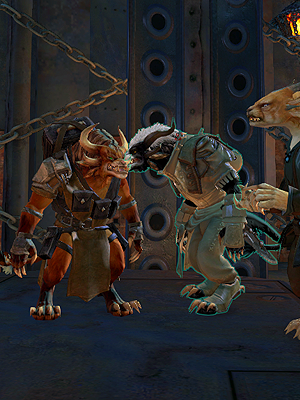 Auction houses need to be a two-way street
Auction houses need to be a two-way street
The typical themepark MMO auction house allows players to list their wares for sale, offering potential buyers the option to either buy at the listed price or not. In this system, players do not get feedback on why their item isn’t selling and cannot tell if the issue is a true lack of demand or whether the price is behind the lack of sales. Two-way systems that allow the creation of both purchasing requests and sales offers can correct the supply-only nature of one-way trading. This in turn allows for further competition between traders and leads to a more efficient marketplace that provides more accurate pricing for people making the decision on whether to farm or create something.
This kind of system works best in an MMO with a limited number of generic items to trade as in EVE Online with its ships and modules, or in an MMO with an auction house such as Guild Wars 2 that allows thousands of players to compete over the same items with both buy requests and sell offers. This opens up the market to proper supply and demand, making clear the upper and lower bounds of what someone will pay for a set item and what another will sell it for. The mechanic also helps narrow the gap between both parties, encouraging more trade and helping to prevent market stagnation.
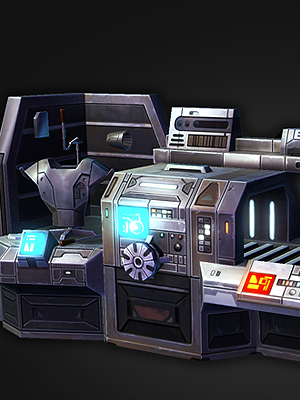 Open crafting mechanics with valuable output
Open crafting mechanics with valuable output
A clever crafting system can tie nicely into the marketplace by encouraging the sale of materials and crafted items to prevent stagnation. I’m a firm believer in actively creating demand for crafted goods, and the easiest way to do this is to have the output shape up well beside the alternative items that can be found as loot in the game world. If the crafted gear is easily outstripped by that found in the easiest dungeons and raids, for example, its value is permanently limited and it will eventually be unnecessary for a large sample of the currency-rich playerbase. They’ll hold on to their coin and it’ll stay in the game economy, bunging up the system, devaluing the currency, and making the climb for low-level new players all the steeper.
When the crafting output is desirable, the materials become more valuable too, encouraging their exchange and allowing yet more money to be removed from the system through auction house fees. Developers can help this along by making even the low-level resources continue to be useful to all players so that everyone can contribute and gather these materials. The auction house fees for trading materials and other consumables can be a significant currency drain, but only if they’re actually sought-after and valued by the players. Once they have been trivialised, developers lose that potential drain and need to try and create another, creating more work in a spiralling cycle.
Having separate crafting specialisations can also help drive transactions because you’ll inevitably purchase the results of the crafting disciplines that you’re not currently working on. Competition within each specialisation is also a very necessary component of the virtual economy, however, so players can’t be locked to a finite path permanently. If players can’t decide to switch their specialisations, developers run the risk of flavour-of-the-month crafting demand causing monopolisation. Letting players drop and gain skills as the market demands, even if there’s some cost associated with switching, helps keep the crafting economy efficient and avoids market manipulation and monopolisation.
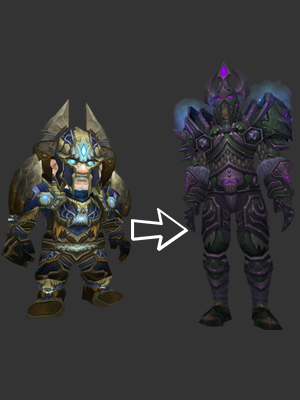 Remove gear progression and make equipment fragile
Remove gear progression and make equipment fragile
One of the most important ways MMOs tackle economic inflation is by diluting the spending power of existing money in the economy through the influx of new materials and items that players can trade and will want. This makes gear progression a very strong factor in economy stagnation and hyperinflation. I think a shift in the way traditional MMOs look at progression is the answer to the problem, because no matter which way I look at the gear treadmill, I can’t see a way to make that kind of progression fair for everyone.
Bind-on-pickup or soulbound gear was brought into MMOs in order to keep the loot treadmill fair, but it has the negative side-effect of closing off a highly coveted commodity from the item economy. On one hand, players wish to be adequately rewarded for the hard work and many hours put into endgame content and will feel cheated if other people can simply buy their way to the top. On the other, the gear grind shuts off later challenges to newer players because the intermediate content stops being run when the larger endgame community is geared up to a higher tier. Old content and items quickly become obsolete and must be replaced with something new.
One solution that could work as part of an existing game economy is to give crafted gear a finite shelf life or to use crafting materials to repair rare items. Every time I step into a battleground or raid, my gear should take the battering in place of my character, and if I lose, die, or take massive damage, that gear should be at risk. Virtually every MMO has repair facilities that act as currency sinks, but not as many are “cruel” enough to break your gear entirely and necessitate its replacement, nor consume materials to repair that gear. It seems a little hardcore on the surface, but we only need look to the huge battles of EVE to see that it’s a risk that some MMO players would be willing to take. If gear was seen as the tool it really is and coveted pieces were sufficiently rare but were tradeable, the trading of such equipment would enable developers to keep a much tighter handle on inflation in the economy.
Over to you!
Do you think that the auction house is a good place to start correcting the game economy, or that crafting is underused in most MMO economic models? Do you play an MMO in which you feel the economy needs a major overhaul? If so, how would you fix it? Would you play a themepark MMO with totally disposable gear? Let me know in the comments below.
 MMOs are composed of many moving parts, but Massively’s Tina Lauro is willing to risk industrial injury so that you can enjoy her mechanical musings. MMO Mechanics explores the various workings behind our beloved MMOs. If there’s a specific topic you’d like to see dissected, drop Tina a comment or send an email to tina@massivelyop.com.
MMOs are composed of many moving parts, but Massively’s Tina Lauro is willing to risk industrial injury so that you can enjoy her mechanical musings. MMO Mechanics explores the various workings behind our beloved MMOs. If there’s a specific topic you’d like to see dissected, drop Tina a comment or send an email to tina@massivelyop.com.
